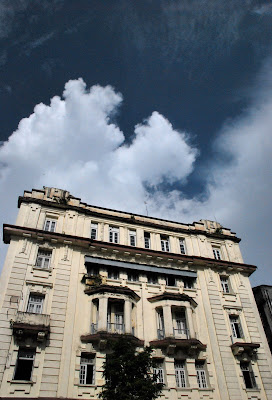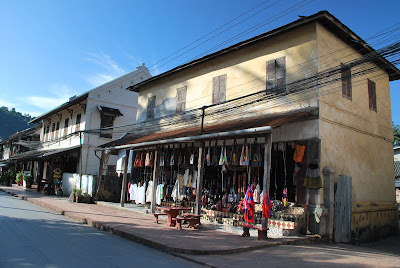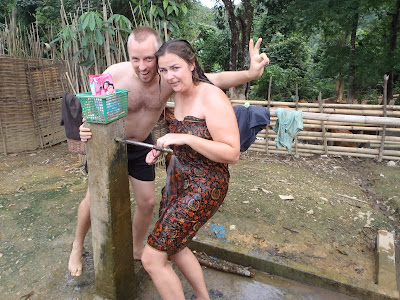“In two days time, something very special will happen in Bagan,” he continued. “In two days time, the Great Lady will visit Bagan.”
I felt a tingle up my spine. If there’s one taboo in Myanmar, it’s any mention of Aung San Suu Kyi, the pro-democracy leader of the NLD who has spent the last two decades in and out of house arrest. But here was a man, who until four hours ago knew nothing of who we were, opening up his heart and confiding in us thoughts that could easily land him in deep trouble with the authorities.
“She is the most beautiful, loving, courageous lady,” he went on, pausing to emphasize each word. “I love her. She is truly the Great Lady. And she will come to Bagan.” His entire body welled up with pride and hope. He finally looked at us, as if coming out of some reverie. Laura and I both felt the need to choke back a few tears.
“So, will you get to meet her?” Laura asked.
“No,” he said as a shadow fell over his face. “It would be too dangerous for me. Some people are brave, but I am not so brave. I will see her from a distance.”
“What would happen if you did go up and greet her?” I asked.
“The government will give me trouble. They will give my family trouble. I have to think of my family, so I will not meet her.”
I was no stranger to the fact that political oppression was commonplace in Myanmar, with harsh consequences for any open displays of dissent. But the fact that this man was barred from meeting someone who clearly inspired him and with whom he placed so much hope for the future of his country based entirely on the fact that he was afraid of some form of retribution tore me up inside. Like millions of people in Myanmar, his government had made him feel afraid of anything that might single him out. In order to get by, you were better off asking no questions and averting your eyes from anything that might signal trouble. I couldn’t help to wonder how long it would take to get to that point in my own country, and yet still grateful that we still have the opportunity to disagree, protest and at least have some avenue in which to voice our dissent. In Myanmar, that simply wasn't possible.
“Do you think that now that She is free, that She will help to change the situation in Myanmar?” I asked.
“I don’t know. I can only hope. I don’t think so.”
“What needs to happen for things to change?” Laura asked.
He paused, thinking the question over carefully. “The soldiers. The soldiers must decide to change. Then it would be possible.”
“Is that likely?” I asked.
“No. Not anytime soon.” After a sustained silence, he smiled at us once again. “I thank you for listening to me. As a guide, I meet many people and I know I can trust you. It is important for me to tell you these things.”
***
This is just one of several stories told to us during our time in Myanmar. I suppose that in some way, my role in writing this is similar to how he viewed his purpose in communicating his thoughts with us. I think that it’s fair to say that our perception of Myanmar in the West is constructed to a large degree by what the media presents us, which is by and large negative. As a result, not too many positive messages come our way regarding this secretive and isolated country. Although the harsh reality of the oppressive nature of the regime is evident in the above story, there’s so much more to Myanmar than just politics and human rights abuses. I also think the above story helps to illustrate the one factor that is often left out of news stories on Myanmar: namely, the people.
I mean, who wants to hear about people organizing a grassroots recycling education program? Who wants to know about efforts by communities to improve their schools? Who wants to know about a restaurant owner who benefitted from the generosity of an Italian woman who trained him in the art of pasta making and provided him with all of the necessary equipment to run his own Italian restaurant that catered to the tourist market? It’s so much more interesting to hear what horrendous things the government is doing, right?
The reality is that a bulk of our experiences in Myanmar revolved around meeting people whose stories no doubt underscore the human element that is often absent from mainstream media coverage. They are the stories of people trying to get by, often in the face of adversity and poverty, but nonetheless making the best of what they can out of their lives and the lives of their families. The people we met in Myanmar were some of the warmest, kindest and gracious people we’ve met on the planet, and if there’s a single reason to visit the country, it’s for the people alone.
There is a lot of debate about whether or not it’s ethical to visit a country like Myanmar out of fear that one’s money will ultimately end up in the hands of the junta, therefore, indirectly supporting their regime. The fact that some of your money will go straight to the government is unavoidable – from visa fees, airport taxes, entrance fees to tourist sites, you’ll be throwing a few bucks the junta’s way. However, with more and more people becoming dependent on the tourist industry for their income, a lack of tourist dollars equates to an inability to support themselves, their families, and in some cases entire communities. The reality is that tourism is a very minor preoccupation of the government’s. A vast majority of companies, restaurants and hotels are all independently owned and operated, meaning that your money goes directly to the people who need it the most. With some advance research and with a careful eye one how and where you spend your cash, you have a better chance of affecting the people of Myanmar in a positive way, rather than a negative one.
As one person we met told us, the fact that we were there gave some people hope that the world hadn’t abandoned them, and that upon returning to our home country, their stories would be passed on to those willing to hear them.
After all the memories the Myanmar people had given me, this is the least I can do.
Yangon







Bagan















Lake Inle














































































